Introducing Claudine Chan-Cobankiat, Managing Director of Kichitora of Tokyo a 3 location restaurant chain as well as Qrius a small retail chain in the Philippines.
 1. You are in both, restaurants and retail – can you tell us a bit more about them?
1. You are in both, restaurants and retail – can you tell us a bit more about them? 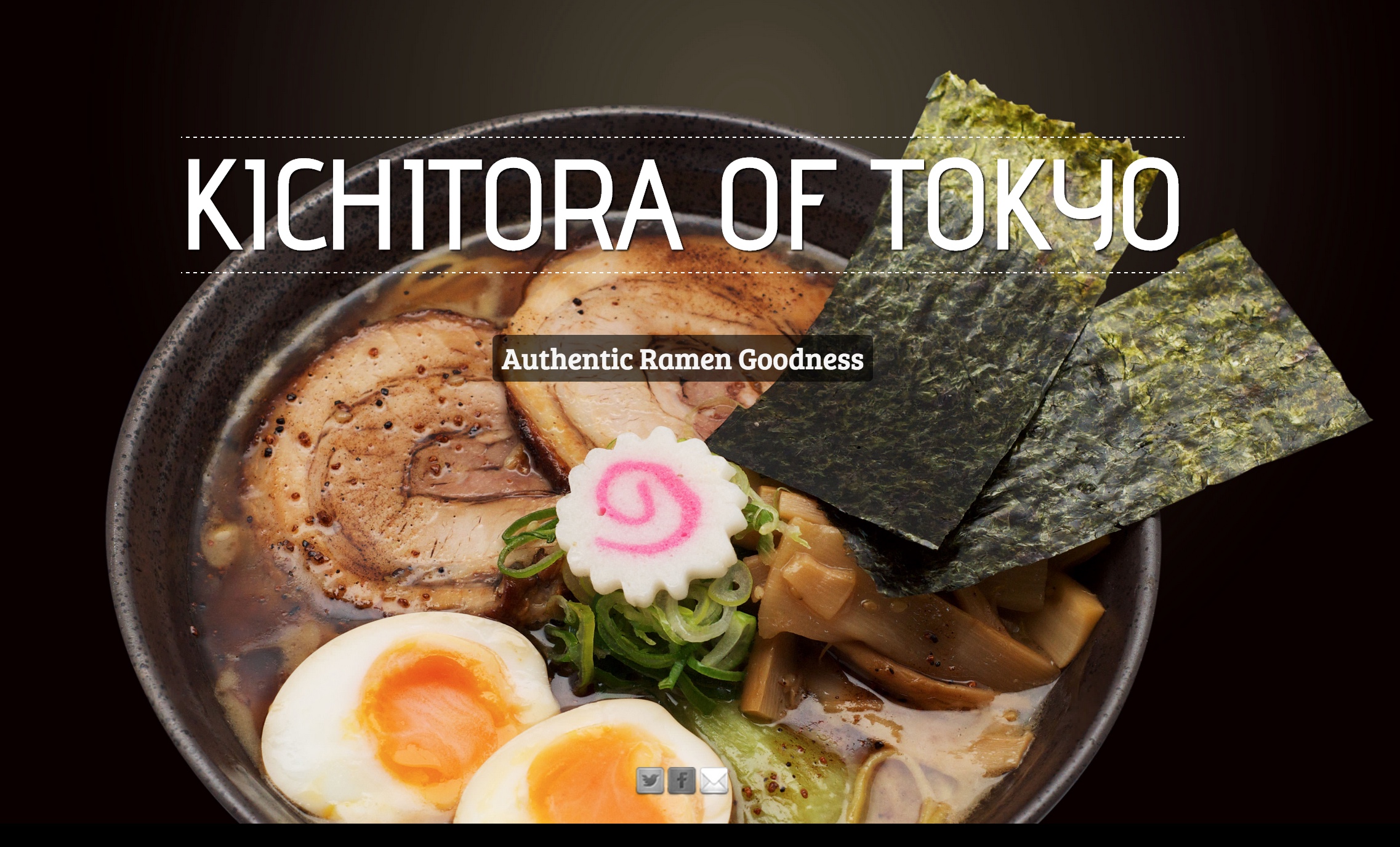

Introducing Claudine Chan-Cobankiat, Managing Director of Kichitora of Tokyo a 3 location restaurant chain as well as Qrius a small retail chain in the Philippines.
 1. You are in both, restaurants and retail – can you tell us a bit more about them?
1. You are in both, restaurants and retail – can you tell us a bit more about them? 
 Singapore’s Changi Airport is building its fourth terminal which is scheduled to open in 2017. Terminal 4, now 70% complete, will see 16 million passengers through the year. That’s an estimated total of 82 million passengers once T4 operates in full swing. We are super excited to see what Changi has in store for us, considering Terminals 1-3 have movie theaters, a butterfly garden, a 4 storey tall slide (a.k.a the tallest slide in Singapore) and who knows what else.
Singapore’s Changi Airport is building its fourth terminal which is scheduled to open in 2017. Terminal 4, now 70% complete, will see 16 million passengers through the year. That’s an estimated total of 82 million passengers once T4 operates in full swing. We are super excited to see what Changi has in store for us, considering Terminals 1-3 have movie theaters, a butterfly garden, a 4 storey tall slide (a.k.a the tallest slide in Singapore) and who knows what else.
T4 will be a two storey building and 190, 000 square meters: the size of around 27 football pitches. This S$1.82 billion project is not just exciting for passengers. It is a massive opportunity for retailers and F&B outlets as well. With 17,000 square meters floor space devoted solely towards retail, there is plenty to look forward to. Changi has announced that the retail space will offer the most innovative design, offering customers a differentiated shopping experience.
In fact, everything about Terminal 4 is about giving commuters an enhanced experience at the airport. It starts with increasing productivity through its FAST@Changi concept. Fast And Seamless Travel (FAST) will reduce the need for manpower and increase the speed of check-in and immigration procedures. To facilitate this, Changi will have self check-in, self baggage tagging and automated baggage drop terminals. Facial recognition and biometric technology will reduce the number of security guards employed for manual visual checks at multiple checkpoints. If we haven’t said it enough before, here is another example of how technology is reducing the need for labour, saving time and money, all in one go.
Imagine entering an airport and walking straight to your gate without having to constantly pull out your boarding pass and passport to clear security checkpoints. Or if you’re anything like me, imagine all the extra time you’ve now got at duty free stores because you took just a couple of minutes checking in!
This is exactly what retail and F&B outlets are looking forward to. The FAST concept gets 16 million passengers through the doors of Terminal 4. It also gives these passengers more time on the retail floor to shop and dine. While designing the new concept, Changi switched on its ridiculously client focused side and implemented recommendations from the public on the theme. The design shows off Singapore’s local culture and heritage. The Peranakan-inspired storefront facades are just an example of what the walk – through concept at T4 will look like.
With a year and a half left till T4 opens, we know the retail space is dedicated to 80 outlets. It is still too early to tell which brands will be occupying the space. The amount of traffic that these stores will face in the initial period depends on the number of airlines that T4 will service. Changi has announced 6 airlines that will have access to T4: Cathay Pacific, AirAsia Berhad, Thai AirAsia, Indonesia AirAsia, Vietnam Airlines and Korean Air. In the year 2014, these 6 airlines added a total of 7 million passengers to the airport. A few more airlines will join these 6, resulting in an estimated 10 million passengers in the first year of operations. We’re looking forward to more updates on T4 and will keep you updated about the retail and F&B world inside T4!
Introducing Joey Qua, CEO, Collezione-c2.com with 25 branches nationwide and a growing restaurant business.
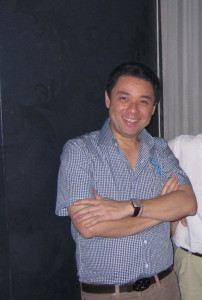 1. Can you tell us more about your background in retail?
1. Can you tell us more about your background in retail?
We started Collezione C2 15 years ago with one branch in Festival Mall Alabang. Collezione C2 is a second generation brand that I started back in 2000 after coming back from my studies and work in the U.S.
The original Collezione (C1) was established by my father 43 years ago (est. 1972) when he saw the need to develop a local label (of polo shirts) in order fulfil the needs of the Philippine market that had a severe shortage in supply of quality clothing during that time due to heightened import and travel restrictions because of Martial Law.
Today, Collezione C2 has grown to 25 branches nationwide. It exists side by side with the mother brand Collezione (C1) which is the more classic and conservative label, designed to cater to a more mature set of customers and sold in department stores only – while on the other hand, Collezione C2 which is the more hip and modern label, caters to the younger segment of the market and is sold only in free standing stores in the different malls around the country.
 2. Your clothes are pretty famous, even the President wears them, how did that come about?
2. Your clothes are pretty famous, even the President wears them, how did that come about?
Collezione C2’s design DNA is based on three tenets: Fashion, Arts and Nationalism….. and because we were able to create a very unique and iconic polo shirt with the Philippine map design back in 2008, a lot of Filipinos embraced the design concept and felt a deep sense of patriotism and love of country along with it. Being the President of the Philippines, President Noynoy shares the same deep love and patriotism for our nation just like our brand, and he decided to start wearing our shirts during less formal occasions. And of course, we are very happy, honored and grateful to him for doing so – he shares the same passion for love of country as we do.
3. How many retail stores do you have?
Collezione C2 currently has 25 free standing stores in the different malls nationwide.
 4. How do you decide on a location? (mall, street level, etc)
4. How do you decide on a location? (mall, street level, etc)
As many retail experts would say: Location, Location, Location is the key to the success of a store….. Which I strongly believe in – unfortunately, there is so much competition in today’s retail landscape that a retailer will just have to make do with what is available and make certain compromises and adjustments in order to make the store location work – even if it is far from being in a prime location. We have a team in our organization that scouts the area of the given space at different times of the day and of the week, and we also study the different retail brands beside and across from the location being offered to us, we make our own internal calculations if the foot traffic and retail sales from the different stores around the site reconciles. And if the numbers look good and promising, then we sign on the dotted line with our retail partners, which are the mall operators. At the end of the day, we want to establish a ‘win-win’ formula between us retailers and the mall operators because at the end of the day, our success is their success as well, and vice versa.
5. At what point did the number of locations change how the business is run?
For us, after 12 to 15 branches, we had to seriously consider re-organizing the company and adding more departments to address the growth of the business. For one, we had to switch our POS system at the frontend and the software systems at the backend to accommodate a bigger volume of sales and inventory. Moreover, we also had to upgrade our people in terms of job experience, skill-set quality, and manpower requirements. We simply outgrew the system at our 12thto 15th branch.
 6. What was the tipping point for you?
6. What was the tipping point for you?
When you reach a certain sales volume, and your backend is not equipped to handle it, then disorganization and inefficiency will surface in your day-to-day operations and chaos will likely ensue – so before that even happens, you should have the foresight to have your backend ready to address the rise in demand of the business.
7. What does the ASEAN integration mean for your business?
2 things, opportunity and competition – you just have to step up to the plate and take your business to the next level or you will end up irrelevant if you do not innovate fast enough to meet the demands of a more intense competitive environment.
8. What are the benefits of operating in the Philippines? downsides?
For one, we are experiencing a growth in the economy and population…. there is a growing middle-class which means disposable income is on the rise, which gives retailers the opportunity to serve deeper pockets. The downside is that the barriers to entry for the retail sector is being lifted at an accelerated pace right now – there are just so many retail brands out there, whether global or regional, that have been aggressively coming here and expanding in our shores which make the local brands like us have to deal with a plethora of competition for both market share and retail space.
9. You are involved in restaurants now, how did that come about?
It’s always good to spread your investments or business interests in different sectors or industries, especially now that the competition is getting stiffer and stiffer in retail…… diversifying and spreading the risk is more like it.
9. What is different from the restaurant business to the retail business in the Philippines?
I believe it’s somewhat the same….. both businesses involve people management, products and services. But of course the differences will be in the creative concept and business model.
10. Do you think about locations differently for restaurants?
We go about it the same way, it’s just that the criteria that we set is different for clothing retail than for the restaurant business. If it meets certain criteria then we proceed with the build.
11. What is next for you in your retail/restaurant businesses?
For clothing retail, we are more discerning and selective with our expansion plans since we are at 25 stores already, for the restaurant business, we are much more aggressive because we have a few stores open and a couple in the pipeline and we feel that there is more room for growth in this sector.
 Creative destruction, a term coined by the economist Joseph Schumpeter in 1942, is the concept of “incessant product and process innovation mechanism by which new production units replace outdated ones.” Schumpeter says that disruption is an important part of capitalism because it increases productivity.
Creative destruction, a term coined by the economist Joseph Schumpeter in 1942, is the concept of “incessant product and process innovation mechanism by which new production units replace outdated ones.” Schumpeter says that disruption is an important part of capitalism because it increases productivity.
As the term suggests, creative destruction isn’t a particularly comfortable concept, especially for those who are on the wrong side of it. The invention of the steam engine led to the creative destruction of travel by horses. The invention of automobiles led to the creative destruction of travel by steam engines. It’s an inevitable result of innovation which can make complete industries obsolete, and take thousands of jobs along with it. The positive outcome is that it creates new industries and redefines jobs within them.
So where is all of this going? McDonald’s recently announced its plan to install self ordering kiosks, thereby reducing manpower in their outlets. It’s not the only company to make a move towards automation. Chili’s Grill and Bar has made a move towards self ordering tablets. Restaurants in the US find automation a way to improve productivity.
There already exists a machine that creates 360 gourmet hamburgers in an hour. The entire machine could replace any human making burgers in the kitchen. According to this report, McDonald’s could fund the development of a burger making machine and see a one year return on investment. There are many reasons why companies are moving towards automating their processes.
In the United States, a big reason for this is the growing cost of labour. Currently, the minimum wage in the US is $7.25 per hour. For a few years now, workers in the F&B industry have protested that this number is far too low for it to be sustainable. They say that the reasonable wage floor should be at $15 per hour. LA recently passed legislation for $15 per hour.
The result of this is that fast food franchises are finding it increasingly difficult to cope with the labour costs. The alternative is to automate. Mundane and repetitive tasks can be done by smart machines. Jobs where human interaction is required, like serving food, can be taken up by people. Another reason why automation makes sense is that it’s more efficient and faster. Queues are shorter, human errors are less common, if not completely erased.
You can see parallels in the F&B industry between the US and countries like Japan and Singapore. On the one hand, labour costs are increasing in the US, forcing companies to automate. On the other hand, Japan and Singapore are facing a labour crunch often due to unwillingness of the countries’ citizens to participate in this industry, leading these countries to automate as well. The story is the same, where labour as a factor of production is being replaced by machines that can do the same work and produce better results. And this is where creative destruction fits in.
What does this mean for the F&B industry? Restaurant technology will develop and will facilitate automation. The hamburger machine by Momentum Machines, Inc is just the beginning in the back-end of a restaurant. POS systems, self ordering kiosks, cloud based scheduling applications and online reservation websites are taking over the work of regular staff in a restaurant. An entire ecosystem of automation surrounding retail and F&B already exists but what will trigger the momentum of creative destruction is the lack of a sustainable solution to the problem of increasing costs: in this case, the cost of labour.
The PayrollHero blog aims to be the knowledge repository for any restaurant owner or retailer in Southeast Asia. We have built our database with things you need to know while doing business in the Philippines.
With that in mind, we have been working on a little project. Presenting the PayrollHero Knowledge Kit for opening a restaurant in the Philippines!
Download it now – free!
This starter kit was put together to give you high level information about the Philippines, share some thoughts from restaurant owners, and present relevant statistics from our market research.
The information here includes research that will help you open a restaurant in the Philippines or expand into the country.
But we don’t want to give you simple hard facts that you could just Google anyway. The Knowledge Kit has a wealth of information in the form of personal stories and experiences in these countries. We interviewed the owner of the Advent Manila Hospitality Group, Mr. Andrew Masigan, and asked him about how he runs his business in this part of the world. We see it as a way to help the community because there is no better way to learn than from people who have gone through the same roadblocks as your are facing right now.
We hope this information is useful to you. We would love to hear back from you with what you think about the Knowledge Kit, how we can make things better and how you use this Kit for your own research into the restaurant industry.
Lastly, we are releasing more of these for the retail and BPO industry. Watch out for more information about these industries and countries.
So go ahead and click on the image above to access the Knowledge Kit. Let us know what you think. And good luck with your new business!
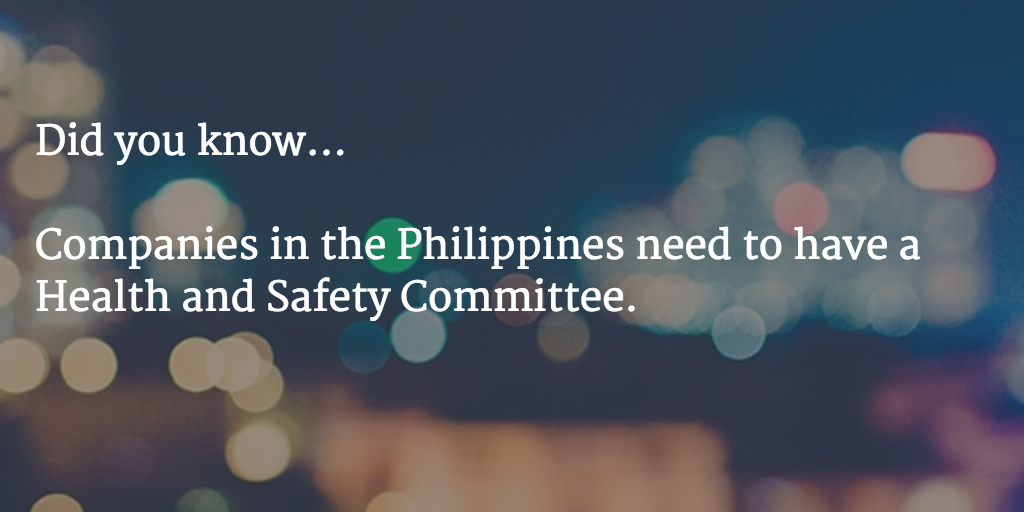 We recently spoke to Nick Sinclair from the Outsourced Accountant. When we asked him about roadblocks to setting up a business in the Philippines, he mentioned some requirements that were unclear to him. One of them was about hiring company nurses for businesses that employ over a certain number of people.
We recently spoke to Nick Sinclair from the Outsourced Accountant. When we asked him about roadblocks to setting up a business in the Philippines, he mentioned some requirements that were unclear to him. One of them was about hiring company nurses for businesses that employ over a certain number of people.
We decided to look into it and try to clear up what the requirements are on company nurses. The Department of Labor and Employment has a list of rules under the Occupational Safety and Health Standards that says that companies need to allocate manpower in order to cater to injuries and prevent diseases from spreading in the workplace. Companies need to have a Health and Safety Committee. The Committee comprises 8 or more people based on the size of the company.
The Health and Safety Committee can be categorized into 4 types with the following composition:
Type A: Companies with over 400 workers
Type B: Companies having between 200 and 400 workers
Type C: Companies having between 100 and 200 workers
Type D: Companies with fewer than 100 workers
The list above covers the minimum number of members in a committee. Companies may choose to have more members in their Health and Safety Committee.
In the Philippines, registered nurses are not hard to find. Nurses face a problem of excess supply and weak demand which is why it is hard for them to find employment in hospitals. They often work as company nurses to gain some experience before moving on to hospitals. Registered nurses can be found through regular job boards. The average salary of a registered nurse is PHP 121,651 per year. (approx. $2700USD)
In addition to following the basic requirements under the Department of Labor and Employment, having a nurse is useful in bringing down healthcare costs for the company. According to the American Association of Occupational Health Nurses, employing a company nurse can bring down costs of injury and illness by up to 40%. With a nurse in the premises, employees must get their illnesses checked before they can take leave, which also reduces the propensity of fraud.
Disclaimer: As always, consult your lawyer or accountant for advice! We are here to help, but your specific situation should be reviewed by a professional with complete knowledge of your situation.
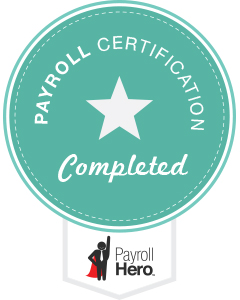 Last week, Kieran our Head of Client Success, conducted training sessions for the new PayrollHero team members in Singapore as well as a few clients. We got some hands on experience with the app, which helped us gain a deeper understanding of how the product works. As an intern who has been here for a few weeks, my knowledge about the product came from speaking with team members, listening to sales pitches and reading about the product online. So it was an interesting experience to use the product on a demo account and view it from the perspective of a payroll administrator. All new PayrollHero team members get certified on the platform so that they know exactly what the platform can do.
Last week, Kieran our Head of Client Success, conducted training sessions for the new PayrollHero team members in Singapore as well as a few clients. We got some hands on experience with the app, which helped us gain a deeper understanding of how the product works. As an intern who has been here for a few weeks, my knowledge about the product came from speaking with team members, listening to sales pitches and reading about the product online. So it was an interesting experience to use the product on a demo account and view it from the perspective of a payroll administrator. All new PayrollHero team members get certified on the platform so that they know exactly what the platform can do.
Kieran took us through every aspect of the product. My first thought when I was told about the training was, “Wow, a two and a half day training session? But I already know everything about it!” Which, as you may have guessed, turned out to be highly overstated. Within the first two hours of training, I came to the conclusion that the product was far more powerful than I had expected.
The first day was about Human Resources Information Systems (HRIS). The next day was spent on generating payroll and the final day was dedicated to understanding time, attendance and scheduling using the app.
The interesting part about the app is its customization capabilities. A human resources (HR) administrator can record the company’s organizational chart. The hierarchy allows you to identify employee types and positions. Thresholds allow you to set rules on what kinds of notifications you get based on the activities of employees under you in the hierarchy. The thresholds have multiple permutations and combinations that, once customized, help you prioritize information that you need instantly versus information that can wait till a more suitable time.
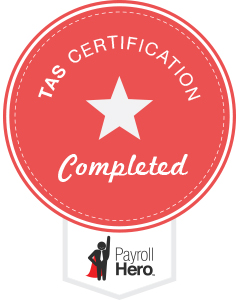 It didn’t stop there. Customization extended to how you segment payroll: employer contributions (CPF, SDL, FWL), bonuses, vacation payments, advance payments, claims that need to be redeemed. Any kind of payment outside of the basic calculation of an employee’s hourly wages can be segmented and customized so that all a payroll administrator has to do, is enter which segment the payment should go into. The app can take care of debiting/crediting the amount to the required account. It will notify you when the account is hitting a pre-recorded limit. The flexibility of the app went as far as allowing you to import data from a spreadsheet, allowing the app to automatically fill in employee details.
It didn’t stop there. Customization extended to how you segment payroll: employer contributions (CPF, SDL, FWL), bonuses, vacation payments, advance payments, claims that need to be redeemed. Any kind of payment outside of the basic calculation of an employee’s hourly wages can be segmented and customized so that all a payroll administrator has to do, is enter which segment the payment should go into. The app can take care of debiting/crediting the amount to the required account. It will notify you when the account is hitting a pre-recorded limit. The flexibility of the app went as far as allowing you to import data from a spreadsheet, allowing the app to automatically fill in employee details.
While all of this might seem like a rather dry topic to train on for nearly three days, Kieran managed to make the whole session more interesting by throwing in quizzes and having interactive sessions. Every demo account had characters from Kieran’s favourite fiction series. Homer Simpson got a bonus for his outstanding work (let’s pretend like that is EVER going to happen), Sherlock Holmes got promoted to the next level on the org chart, Buffy Summers asked for a change in her schedule for the next 3 weeks and Harry Potter recorded coming in early to work consistently. All these characters were a part of the certification exercises, which made the entire process not only informative but also engaging.
The time, attendance and scheduling part of the course was done through an online training portal on the PayrollHero website. Again, I was pleasantly surprised by how detailed the app was and how customizable the entire process of scheduling was. It was impressive that the app was user friendly and flexible with creating, adjusting or removing schedules based on timing, location and type of work: whether it was a routine desk job or a part time job that required changing schedules often. The app, as was intended, was perfectly designed for retailers and restaurant owners who deal with employees who have erratic schedules which require constant adjustments.
The exercises and quizzes were effective in understanding how much we grasped from the lessons. It was clear that working with app required you to be consistent and methodological with the processes for entering data, giving system permissions, organizing the company’s hierarchy and setting customized options especially since the data that the system works with is sensitive. Finally, the certification undoubtedly served its purpose: it gave us a complete picture of how the app works and how a payroll administrator can benefit by using all its features for time, attendance, scheduling and payroll.
Learn more about PayrollHero Certification in the Philippines and Singapore.
Have you ever heard of Glassdoor.com? It is a US based website that “is the world’s most transparent career community that is changing the way people find jobs, and companies recruit top talent.” Founded by Rich Barton who is no stranger to startups. Rich is the founder of Expedia and Zillow with a history at Microsoft. “Glassdoor holds a growing database of 6 million company reviews, CEO approval ratings, salary reports, interview reviews and questions, benefits reviews, office photos and more.”
Basically Glassdoor lets you check on positions salaries, company feedback and much more. While it is growing rapidly in North America it has not seemed to have taken off in Southeast Asia.
Which brings me to the topic of this post;
Your Employees Are Checking Their Payroll Calculations
Every month we get random inquiries from employees we don’t have a relationship with asking about their personal situation. Questions about their taxes, their payroll dates, deductions, allowances, etc.
Are your employees asking around?
For example, here is an inquiry we received recently asking about income tax for an employee of a Philippine retailer. We have no idea who the employee is or what company they work for but they are asking around.
hi.gud afternoon..im working at [retail] store as asst.supervisor..my rate was 513.62 per day..i have 1 dependent..but my tax was 1789 ..its is correct for my salary
Are your employees double checking their payroll calculations?
Feel free to reach out to us for more information about our Philippine payroll software, Singapore payroll software or our daily time record tools for your business.

In Singapore, food hygiene is monitored by the National Environment Agency (NEA). All food retail businesses must be registered to the NEA and regulated by the organization to prove that any food sold or produced by the food retail businesses is safe for consumption (retail businesses include restaurants, cafes, and more but excludes hawker centres).
Grading System
The NEA grades food service establishments based on personal and food hygiene and housekeeping of the premises. The grade must be displayed somewhere within the premises where it can be visible to the public. This is a method for the NEA to encourage establishments to improve their grade by adopting better practices. The assessment of the premises by the NEA results in the following grades:
In order to help food service establishments to improve their cleanliness, the NEA has published the Food Handler’s Handbook and other practices and guiding materials.
Points Demerit System (PDS)
The PDS system is used in order to establish precedence for revoking licenses. Offences are categorized as minor, major and serious. Offences lead to demerit points. If an establishment collects 12 demerit points within 12 months, the establishment can be suspended for 2 to 4 weeks or its license can be revoked based on previous records. However this is a general guideline. The punishment differs for the type of establishment. For example, coffeeshops, food courts and canteens that accumulate 12 points over 12 months will be suspended for three days. Here is a detailed list of offences and the demerit points that they cost.
Food Handlers
The term food handlers refers to any person who is directly involved with food preparation: like the chefs, sous chefs, kitchen assistants, staff that handles beverages. Food handlers need to be registered by the NEA. As the owner of the establishment, you need to register all food handlers by filling up this form and submitting it to the nearest Regional Office. To find your nearest Regional Office, you must call 1800-2255 632 (1800-CALL NEA). In order to qualify as a food handler, a basic food hygiene course must be completed. The Food & Beverage Workforce Skills Qualification (WSQ) takes 6 hours of course work and 1.5 hours of assessment. Upon completion of assessment, the food handles will be given a Statement of Attainment. There are 2 subsequent refresher training sessions after 5 years and 10 years. The details on refresher training are on this page.
Food Safety Management System (FSMS)
The FSMS is used to ensure that manufacture, distribution and storage of food is safe for consumption. Every food service establishment must have an FSMS plan. The components of the plan are the following:
1. FSMS Plan
a. Flow diagram: with Critical Control Points identified
b. Hazard Analysis Critical Control Points: charts for Critical Control Points (CCPs)
2. “WSQ Apply Food Safety Management System for Food Service Establishments” Certificate (Statement of Attainment)
For more information on the FSMS and the requirements for your FSMS plan, click here. The link also gives information on different rules for new caterers and caterers that need to renew their license.
Finally, the NEA along with Spring Singapore has created a Singapore Standard for food service establishments so that they can make their FSMS plans by referring to the guideline. The guideline is $42 and can be purchased here. The process of creating the FSMS plan involves a workshop which includes 14 hours of course work and 5 hours of assessment.
That sums up the brief introduction to food hygiene regulations in Singapore. Hope that helps!
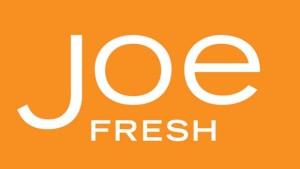
 Canada’s Financial Post is reporting that the retail brand Joe Fresh is expanding further into Asia with the announcement of its partnership with SSI.
Canada’s Financial Post is reporting that the retail brand Joe Fresh is expanding further into Asia with the announcement of its partnership with SSI.
Joe Fresh is owned by Loblaws and has hundreds of stores throughout North America. SSI is the premier partner for restaurant and retail groups looking to enter the Philippines.
FamilyMart out of Japan choose SII along with Salad Stop from Singapore. Joe Fresh is another brand expanding into the Philippines in partnership with SSI.